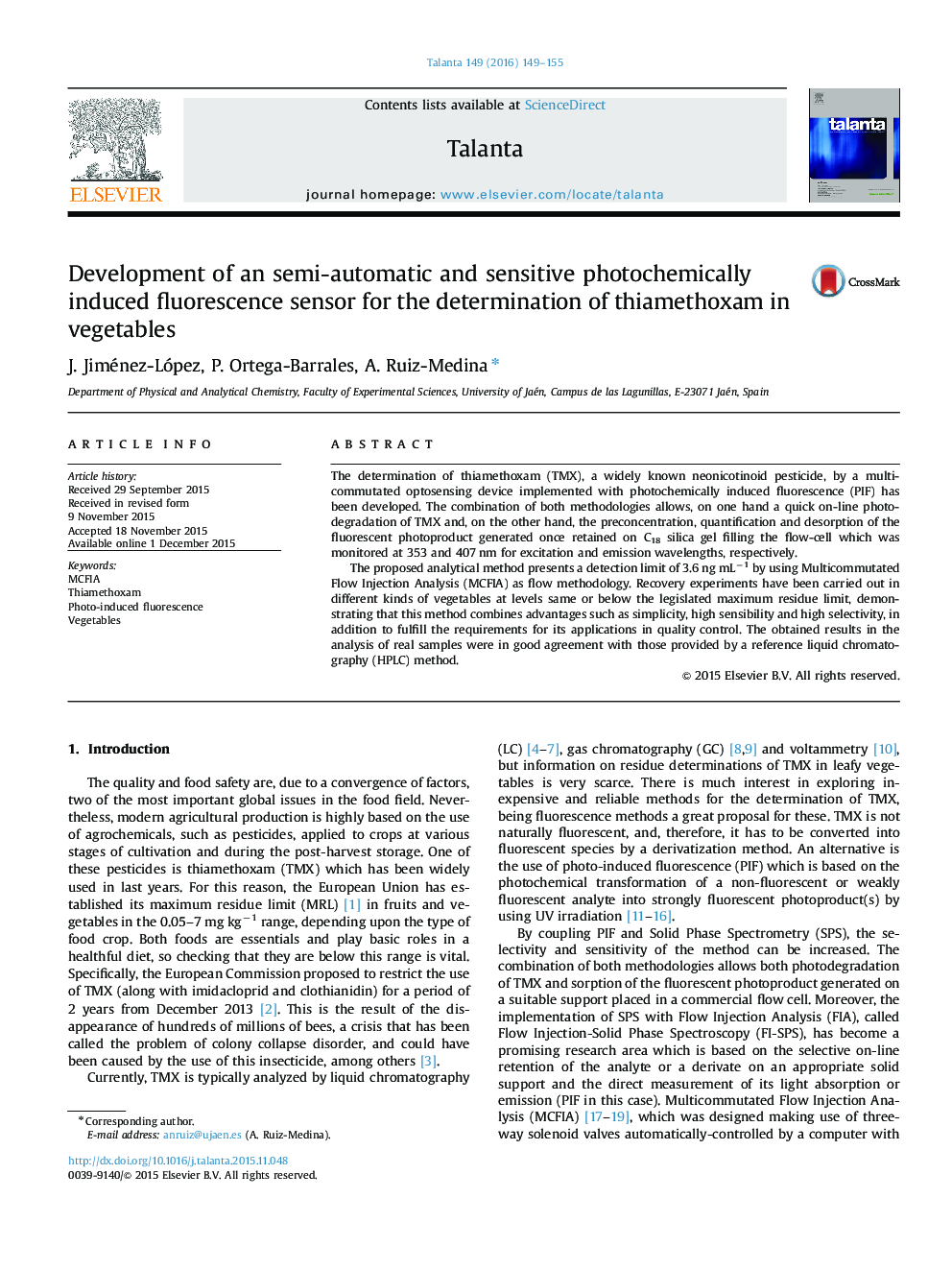| Article ID | Journal | Published Year | Pages | File Type |
|---|---|---|---|---|
| 1241816 | Talanta | 2016 | 7 Pages |
•Photochemically Induced Fluorescence (PIF) analysis of Thiamethoxam (TMX).•Multicommutated Flow Injection Analysis (MCFIA) as flow methodology.•Study of two types of QuEChERS extraction procedures.•Analysis of TMX concentrations below the Maximum Residue Limit (MRL).•Recoveries close to 100% for lettuce, spinach, red and green pepper.
The determination of thiamethoxam (TMX), a widely known neonicotinoid pesticide, by a multicommutated optosensing device implemented with photochemically induced fluorescence (PIF) has been developed. The combination of both methodologies allows, on one hand a quick on-line photodegradation of TMX and, on the other hand, the preconcentration, quantification and desorption of the fluorescent photoproduct generated once retained on C18 silica gel filling the flow-cell which was monitored at 353 and 407 nm for excitation and emission wavelengths, respectively.The proposed analytical method presents a detection limit of 3.6 ng mL−1 by using Multicommutated Flow Injection Analysis (MCFIA) as flow methodology. Recovery experiments have been carried out in different kinds of vegetables at levels same or below the legislated maximum residue limit, demonstrating that this method combines advantages such as simplicity, high sensibility and high selectivity, in addition to fulfill the requirements for its applications in quality control. The obtained results in the analysis of real samples were in good agreement with those provided by a reference liquid chromatography (HPLC) method.
Graphical abstractFigure optionsDownload full-size imageDownload as PowerPoint slide
